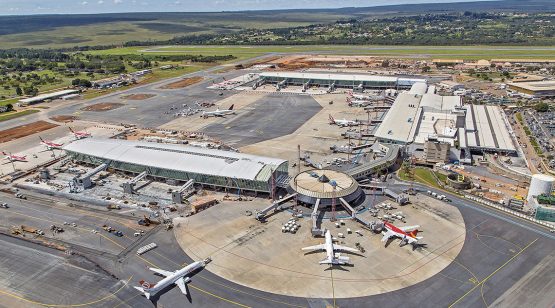Human error is the principal causal factor in approximately 80% of all recorded accidents, regardless of the industry involved. But despite the current trend towards automation, human beings are still the key element of all systems and an intrinsic part of their entire life cycle, hence the vital importance of studying the influence of human behaviour on safety. Regulations in some countries already demand analysis of the human factor in addition to conventional safety assessments.
However, in those cases where risk analysis does take the human factor into account, a market deficiency in regard to methods for performing more in-depth analysis means that it generally only does so on a superficial level. Under this premise, there is a definite need for safety studies that take a broader, more comprehensive view of the human factor, or in other words, the human interaction with systems and how it is influenced by different environmental elements, to come up with effective accident prevention strategies.
One of the reasons the human factor is typically absent from system studies is a lack of scientific knowledge regarding the subject, and also how to include it in risk assessments and safety studies. However, leading national and international organisations now demand increasingly safe and reliable systems, which means that taking the human factor into consideration when designing, producing, operating and maintaining a system has never been more important.
Despite the current trend towards automation, human beings are still the key element of all systems and an intrinsic part of their entire life cycle
Ineco’s project
Over the course of two years, the Ineco innovation project has been working to develop a more thorough and transparent method for handling the human element in safety analyses, which, in turn, will enable us to design systems that are more human friendly. The project analysed proven human-factor methodologies and techniques not generally applied to safety studies and managed to extract, simplify and integrate them into risk assessment processes, therefore, making them universally applicable to any sector of the transport industry. The method was selected as the winner of Ineco’s 2019 Innova Awards and the 2019 CANSO Global Safety Achievement Award.
The company has spent years trying to gain a better understanding of how to account for the human factor in safety. Some of the lines of action include the innovation project, coordination between the rail and air navigation sectors, collaboration with universities such as Polytechnic University of Madrid and the University of Málaga, training in human factors and participation in different forums and conferences.
The project began with an exhaustive analysis of human-factor methodologies and science, which were used to begin to extract different tools and techniques and apply them to case studies, while simultaneously developing other methodologies of their own. Given that safety assessments typically concentrate on identifying threats to mitigate their risks, this time, the project team focused on identifying the human mistake or error.
By doing so, they were able to design a process that included an adapted HRA (Human Reliability Assessment), based on the HEART method(Human Error Assessment and Reduction Technique). The process can be run in conjunction with safety studies and can be tailored to each phase in an integrated and traceable manner. The result is that we now have a generic method for including the human factor in risk assessments.
The main goal of the project was to integrate accepted human-factor techniques into a standard safety study in a way that safety technicians will find easy to apply and, in doing so, to develop new techniques, like FARHRA. In addition, the method utilises and customises different tools such as HAZOP sessions, interviews and targeted surveys or questionnaires, to capitalise on expert knowledge, which is the primary source of information in this type of analysis. The next step now is to implement the knowledge and experience in this area in safety studies for aviation, railways or other sectors in order to verify its consistency and internal and external reliability.
The final results will represent an improvement in the design process of systems with a specific requirement for enhanced human output, increasing safety and adding value and recognition to the human role.
Objective: to reduce human error
- The first step is to analyse the tasks to expand the description of the system, identifying all its relevant human operational interventions and any points where errors could occur. This is then cross-checked with the list of threats or risks for the operation, thus determining human failure modes through Human HAZOP-type techniques, in line with the customary methods of identifying safety hazards.
- Task classification has been developed based on five parameters, rather than the generic task types used by the HEART method. This makes it possible to obtain an overview of the potential for human error in each task; in other words, how easy it is to make a mistake while performing the task in question.
- The overview is then linked back to safety, by carrying out a cause and effect analysis to explain the contribution of the identified human errors to the threats and their corresponding levels of risk or criticality.
- The contributing factors of the error are then determined. The generic lists of Error Production Conditions (EPC) of HEART have also been adapted to generate more usable lists of the factors or Performance Shaping Factors (PSF) that affect human performance.
- By combining the three aspects –task error potential, error criticality and PSFs– priorities can then be established for the final stage of the process: the reduction of human error. Error-reduction measures were initially determined using the NARA (Nuclear Action Reliability Assessment) approach. At a later stage of project maturity, Ineco’s FARHRA (Feasible Action Rules for Human Reliability Assessment) method was developed, which provides a more comprehensive set of measures that are better aligned with the usual approach taken during risk analysis.






